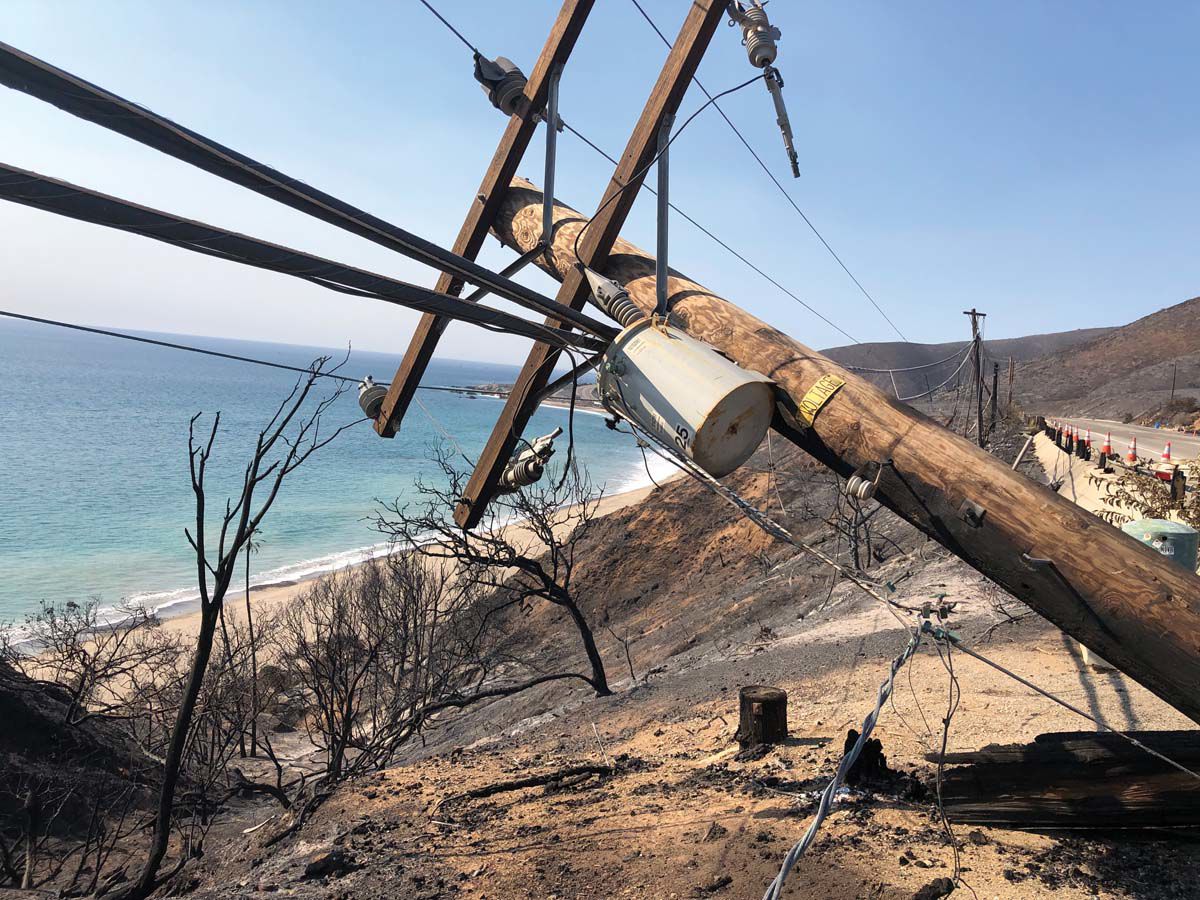
Southern California Edison (SCE) has consistently refused to reveal what triggers intentional power outages—called PSPS, for “public safety power shut-offs” during high winds.
Just how high do the winds have to blow before the power company will intentionally cut the power to Malibu and other high-fire-danger areas?
Before the city council, before citizens groups and in interviews, SCE has refused to release the wind speed predictions that will make them turn off your lights.
Turns out, it’s not very fast.
KBUU News has discovered the wind speed trigger buried deep in a 366-page report SCE recently filed with the state.
Turns out, all it takes is a forecast of 31-mile-per-hour sustained winds or 46 mile-per-hour wind gusts to possibly trigger a PSPS.
Malibu gets forecasts like that all the time.
In a typical year, according to meteorologists, eight Santa Ana events with wind speeds much faster than 31 miles per hour, or gusts above 46 miles per hour, blow into Malibu—notably, earlier this week.
SCE spokesman David Song told KBUU
News that any power company decision to turn off the power is dynamic—it considers many factors, including:
How dry will the air be?
How many trees are near power lines?
How dry is the brush?
What other concerns are there from local officials, like water pumps getting cut off?
And what are the specific conditions of the power lines in any particular area?
Still, the main triggering factor will be wind speeds.
The state used to enforce a rule that required safe and reliable power service in 92-mile-per-hour gusts, But after several deadly and disastrous fires—that have killed more than 120 people statewide—the power companies were given the power to turn off the electricity when they worry about lines falling or sparking.
In effect, the 92-mile-per-hour gust standard was dropped and utilities like SCE were given the power to set their own standards on when to shut off the electricity.
SCE had not revealed that standard—until it buried it on page 65 of a 366-page filing.


